Snowshoes for the Discerning Outdoorsman

And outdoorswomen too, of course.
I’m a winter person more than a summer person. I see snow and I get excited. I carry tire chains year ’round just so I’m always prepared. But hiking in the snow can be a royal pain in the backside, what with post holing and side slipping. Cross country and telemark skiing as well as split boarding have their place but they require specialized gear – namely boots – not to mention needing a way to carry the long equipment.
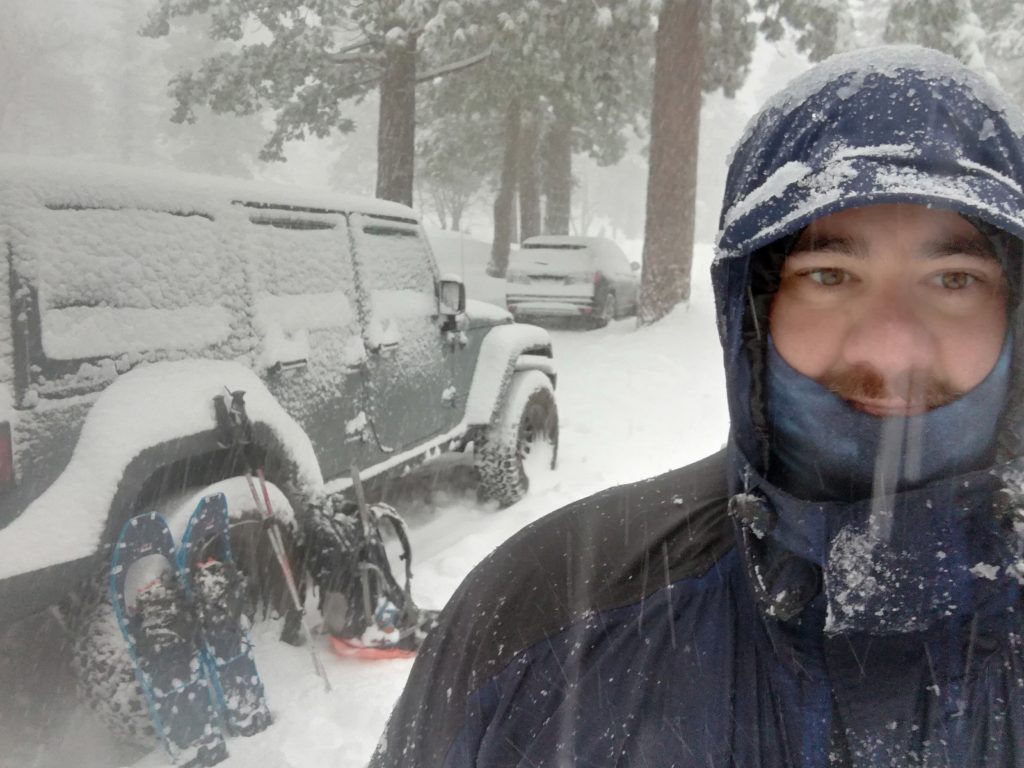
Snowshoes, on the other hand, allow you the freedom to walk almost anywhere you want with minimal fuss or even expense. They’ll never touch skis and boards in terms of flotation and speed of course, but I still like to go hiking even though I like mountain biking, same difference here.
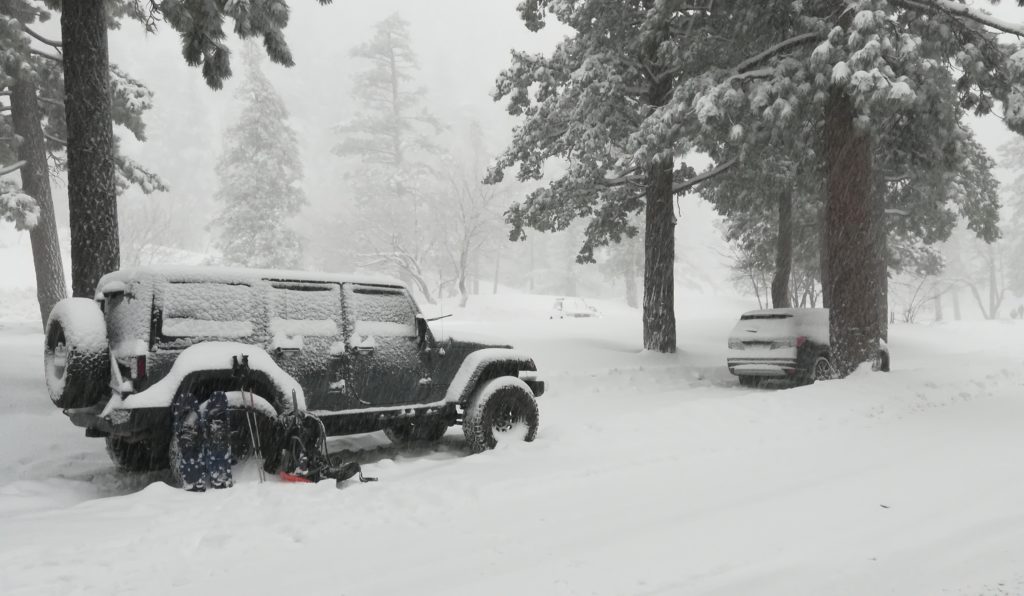
I’m reviewing two completely different types of showshoes here: An old-school style of full float Redfeather Hike (36″) and a mountaineering style in the MSR. Both seem to work very well in their given capacity and frankly, very not well outside of it, although with no real fault for it.
In general, a snowshoe consists of four distinct parts: The frame, the deck (the main material between the frame), the binding, and the crampons (the spikes at the bottom). There’s also the hinge but that’s not something you’ll care about until you know you care about it.
One important caveat to everything I say below: I exceed the weight rating of even the largest snowshoe. Both Redfeather and MSR have a rating of >220lbs for their largest sizes, although the MSR is only 30″ and requires an additional tail float to go a bit longer. Thus, I’ll probably sink a lot more than you so your mileage may vary, but the overall concepts and logic still apply.
Conditions caveat:
It’s difficult to give a precise definition of the appropriate conditions. For example, if you’re hiking something like Baldy via the hut you’ll usually find snowshoes a hindrance. The trail is often both too narrow and too steep on the side-hill to wear snowshoes and you’ll be tripping over yourself. Unless perhaps you’re the first person on new, deep snow, then perhaps the MSRs. The transition from the Redfeathers to the MSRs is generally easy to gauge but the transition from MSRs to crampons less so.
Durability:
I wouldn’t worry about it. What you’re seeing here is quite a few miles and seasons in myriad conditions. They’re scraped up here and there but nothing has frayed, cracked, bent or otherwise done anything but work. If they haven’t broken under my weight and abuse, I seriously doubt they’ll give you any problems.
Great for fluffy, deep snow, they give you all the floatation you’d imagine a snowshoe would give. They’re just not great for side-hills or really anything steep or especially icy. If you like to hike the San Gabriel mountains in the winter these probably aren’t the right choice given the steep, narrow trails. They simply don’t have enough traction from the crampons. You can see in the picture below that there are four spikes under the ball of the foot and then a small section under the heel. Under rolling conditions in deep snow the crampons are almost secondary to the float, which these have in spades.
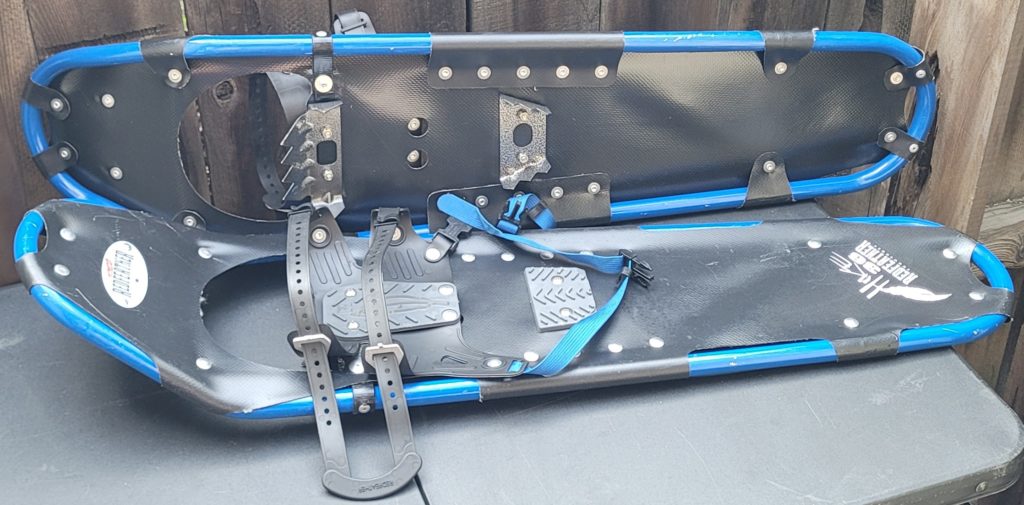
Compare that to the jagged bottom of the MSR Lightning Ascents. These are essentially one gigantic crampon, with jagged teeth around the entire perimeter as well as several rows (2 in the shorter shoes, 3 here) of lateral teeth, not to mention the larger spike under the toe.
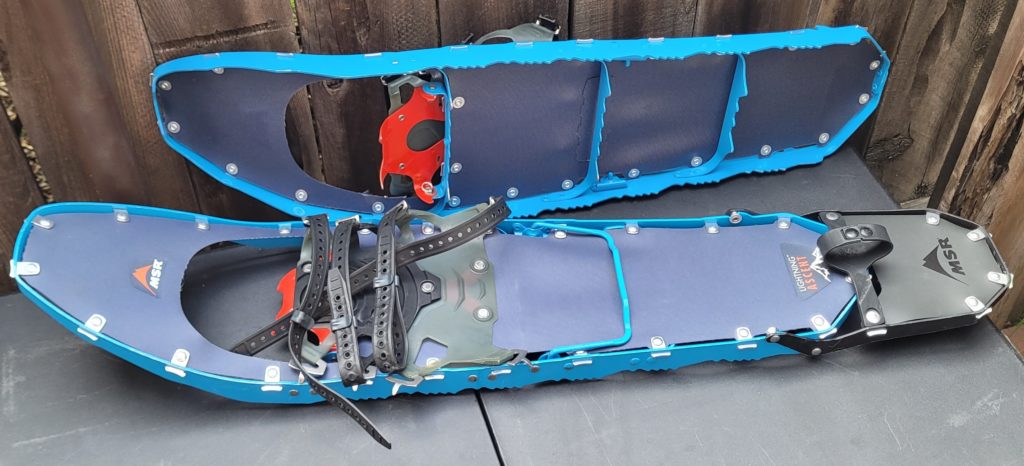
Further yet, look at the width of the Redfeathers versus the MSR’s:

Even yet further, look at the additional length comparing the two (without the additional tail which I’ll note below).
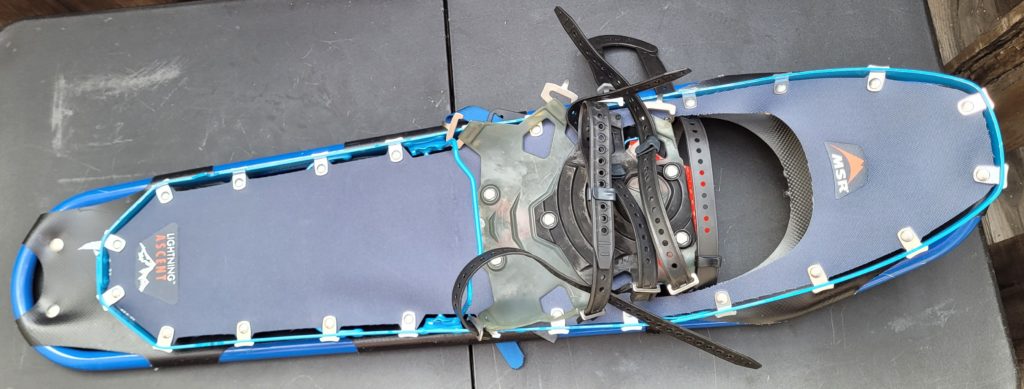
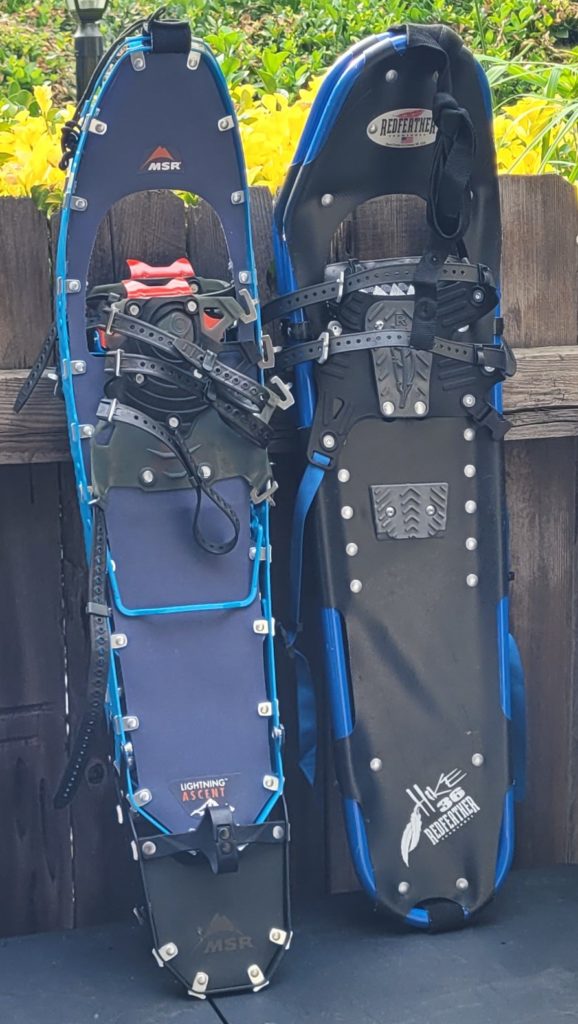
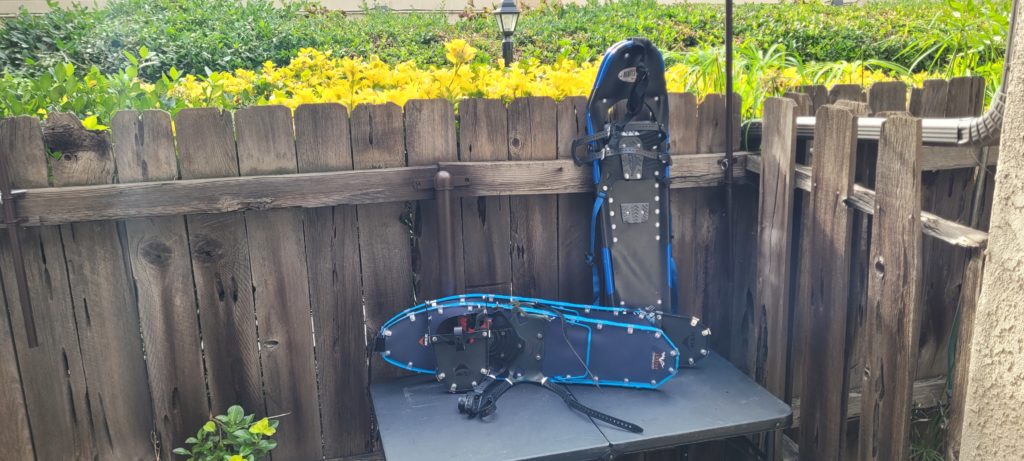
The Redfeathers have a relatively simple binding where the two straps over the shoe are connected and can be connected at the same time and a relatively simple heel clip which can be tightened quickly. In the appropriate conditions this binding is more than sufficient and the only issues I’ve faced with them is when going up steep hills and side-hilling, in which case the foot has a tendency to twist. Again, well past their intended use and not a failing.
Here you can see a size 13 boot in a 36″ snowshoe with a good look at the combined binding. This type of snowshoe really doesn’t have a hinge per se, but rather the material just flexes or rotates around underfoot. Doesn’t seem like a good design offhand but it’s pretty standard, I’ve seen absolutely no wear so in reality, the makers are much smarter than me and it works. Don’t worry about it.
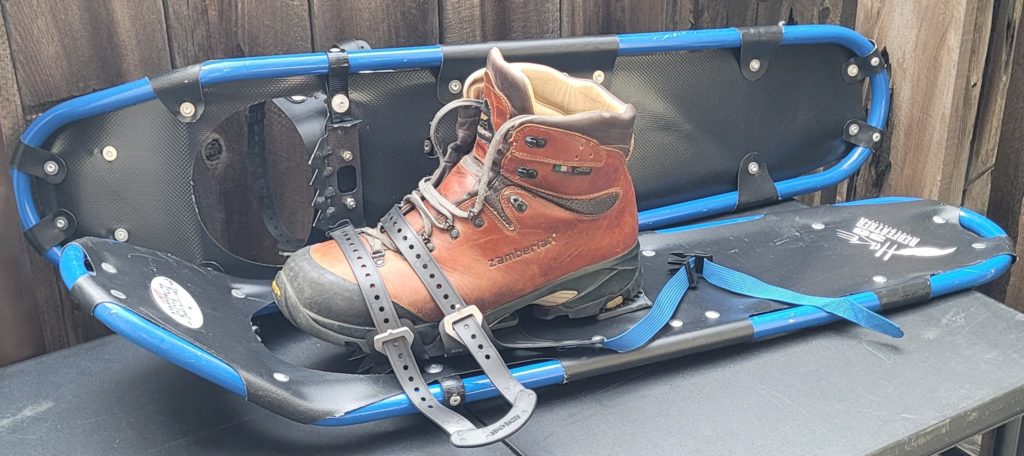
Great for firmer, crunchier snow, they excel in the hills, have grip for days and even have an elevator for your heel to make climbing easier. However, they have much less float than the Redfeathers and deep snow will still have you struggling.


Here you can see the overall length of the MSR’s and the additional float given by the extra tail. The general rule is go as small as you can for the conditions but for me the rule is all the float always, plus more.
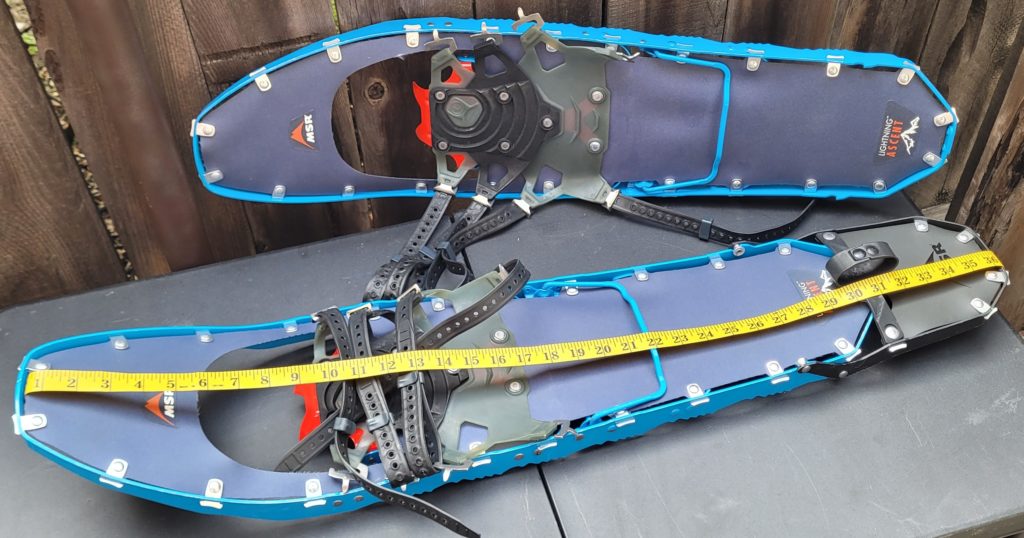
The MSR’s take a significant step away from the Redfeathers in both the elevators (“Televator”) in the heel as well as the actual hinge for the step.
Here’s how the Televators work:
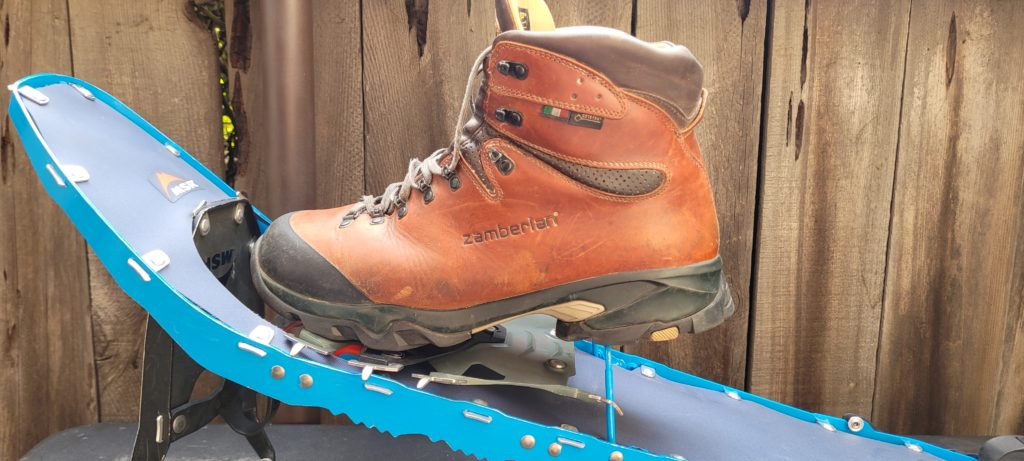
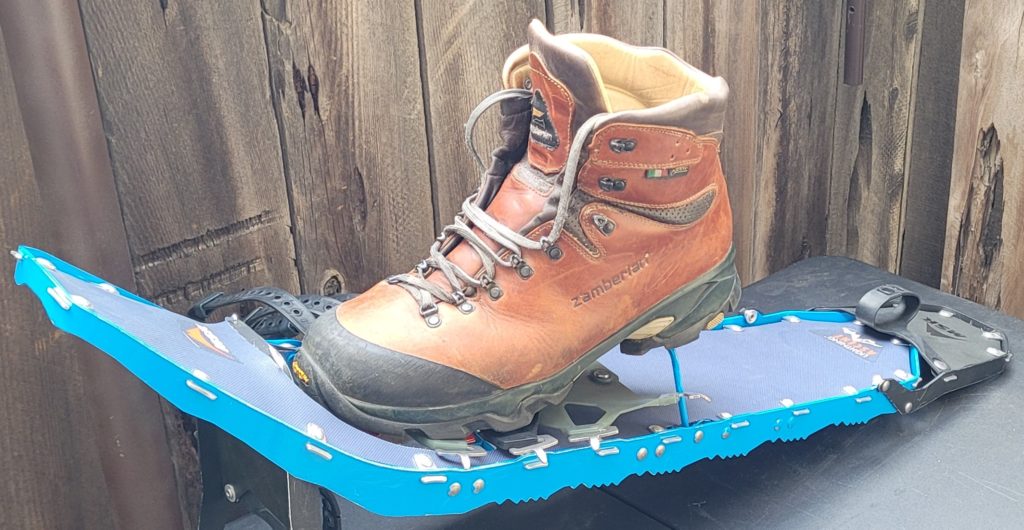
You’d think that tiny little wire would neither work nor be comfortable but in fact they do work and they’re very comfortable. They’re mostly somewhat easily engaged and disengaged using your poles, especially if you’ve added baskets to them, but if you forgot your poles, good luck. I’m not that flexible.
Here you can see the dramatic flexibility given from the physical hinge – literally a hinge and not just flexing the deck.
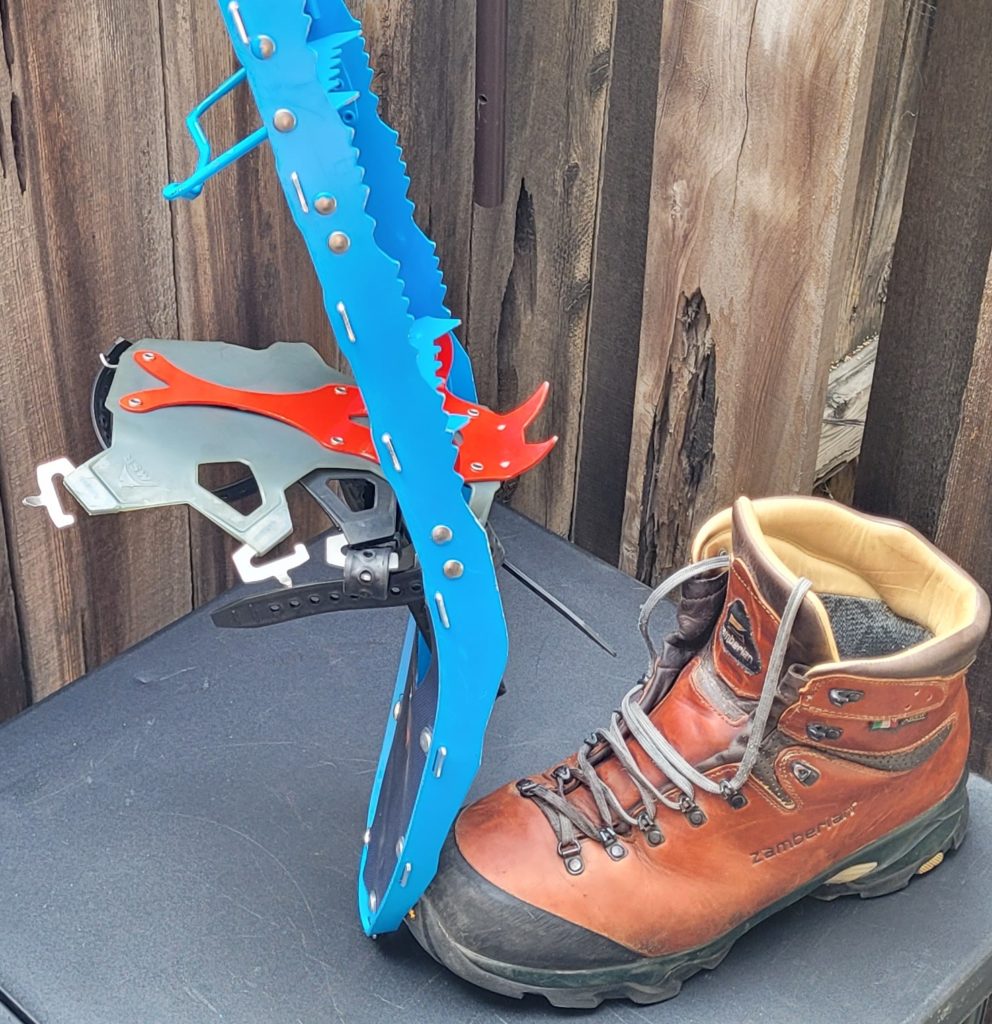
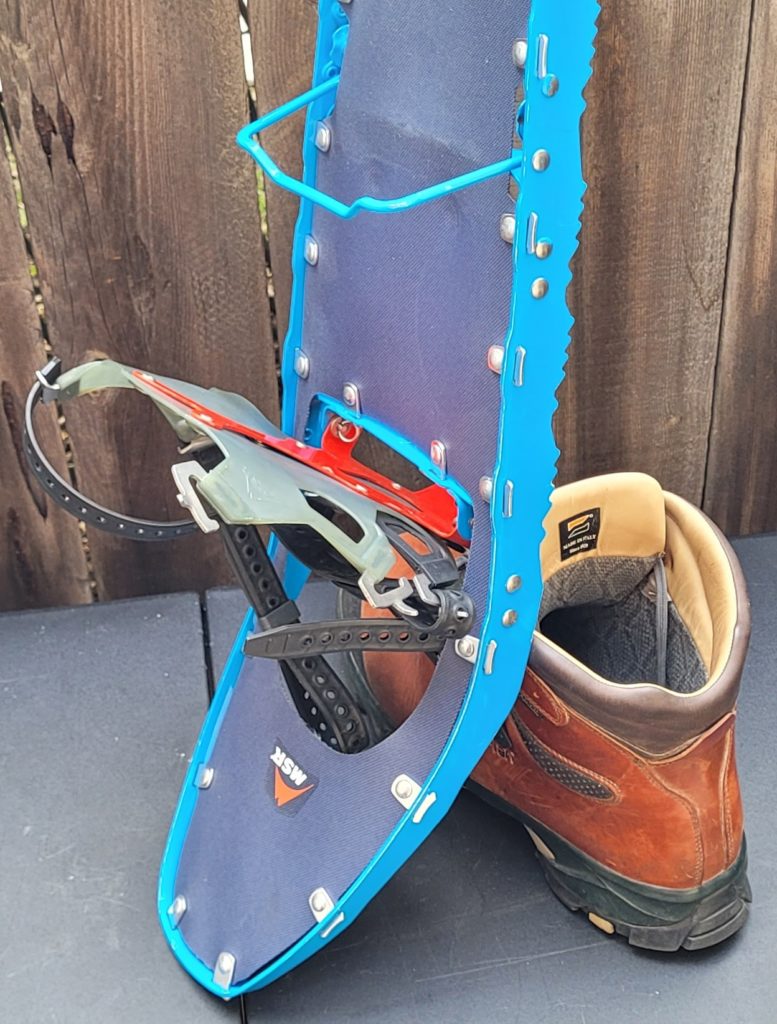
Here’s a fuzzy close-up of the hinge.

As you can see these have four bindings which can be a bit of a fuss to engage, but it looks like on the newer models they’ve rectified this, although I’m not sure about having clips on both the inside and outside of the shoe.
Lastly, these have a tail which can be added to the rear to get an extra 5-6″. It’s a novel design where a pin on the tail aligns with a hook on the frame and a rubber strap holds everything in place. It’s the black piece in all of the pictures. I don’t like the fact that I had to buy a tail and I’m not 100% convinced of it’s efficacy. It does add float, but only to the rear which means the balance fore vs aft changes and the toe feels like it nose-dives in the softer stuff. You’d think it would be exactly the same as the Redfeathers but I think the difference is in the extra width as well as the rounded frame cupping the snow. It’s not a big deal I I won’t go out without the extensions (I only take the off because I’m afraid the rubber will permanently stretch (to date it hasn’t)). If you’re not a huge manly man like me or aren’t a normal person but with a big pack then you might not need these. However, it is nice that they’re universal on the frames.
Conclusion:
So which are my favourite? Both. They’re equally well suited for exactly opposite conditions. Truth is I usually bring both with me and grab those which seem best for the conditions. If I’m looking at deep, fluffy snow in rolling conditions, Redfeathers all the way. If I’m going up a steep hike or in looser conditions I’m grabbing the MSRs.
Which should you purchase (or purchase first)? Depends on what type of hiker you are in terms of snow. If you’d tend to call yourself a mountaineer, are well familiar with snow and alpine conditions, and most often find yourself gaining a lot of altitude, the MSR’s are probably the right way to go. If you’re in rolling hills and soft powder more often go with a more traditional shoe. That said, the MSRs are at least double the price of the Redfeathers so if you’re on a budget and don’t want to rent (or in my case can’t because they never have your size), then go with the Redfeathers, get your snow legs and be happy for it. You won’t outgrow their usefulness.




